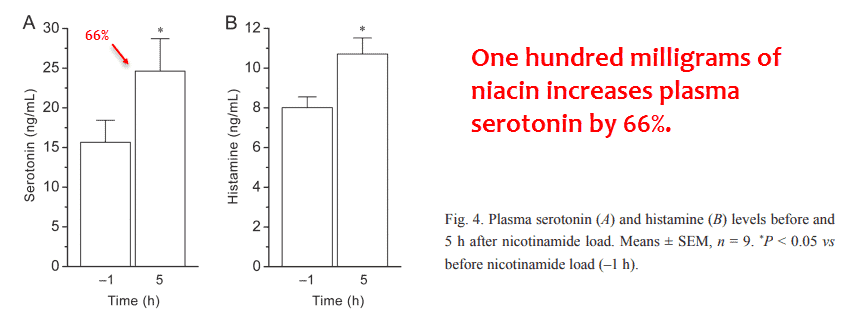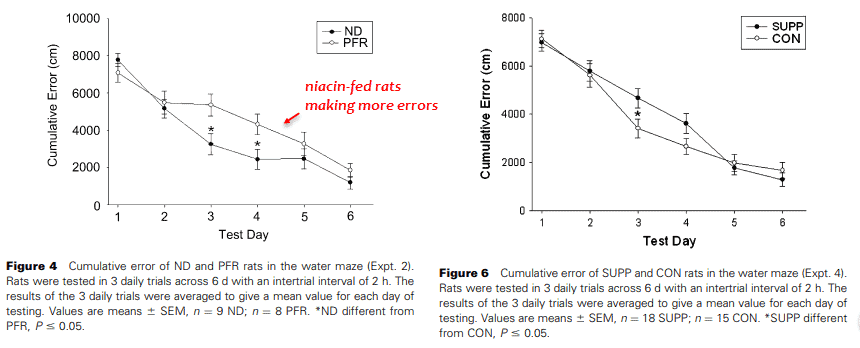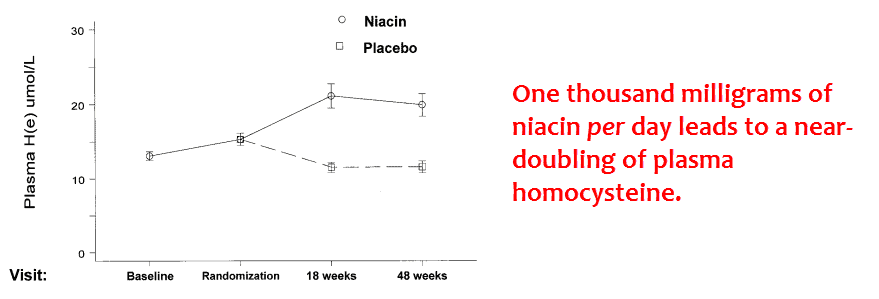
I avoid supplementing with this and here’s why
—-Important Message—-
There are 1500 newspapers, 1100 magazines, 9000 radio stations, 1500 TV stations, 2400 publishers… and these 6 corporations own them ALL

Let me ask you something… how can there be truthful and fair reporting in the media…
…when the media is owned by the same 6 companies with the same views?
It just doesn’t make sense!
And the same thing is happening in medicine today…
A few pharmaceutical giants control the entire medical industry.
They decide what doctors study in school, what doctors tell patients, and they even decide what science gets published!
Sometimes, they even publish FAKE news…
———-
Warning: are you getting too much of this “good” vitamin?
A common cultural attitude is to view all vitamins as quite beneficial, almost completely without regard to dose.
While all the vitamins are completely necessary, by definition, this naive outlook breaks down when considering the cases of vitamin A and folic acid.
Vitamin A is a powerful vitamin-hormone that has the narrowest therapeutic window.
As a fat-soluble vitamin that is normally stored in the liver, retinol (a type of vitamin A) can quickly build up to toxic levels.
And folic acid isn’t even technically a vitamin, but merely a precursor to the active folates — an unnatural one at that.
While still in its unmetabolized precursor state, folic acid can inhibit the brain uptake of the fully-active tetrahydrofolates and inhibit their enzymes.
Although most vitamins can in fact be taken in large amounts while observing nothing but benefits, there remains a small handful that need to be used with caution.
Vitamin D and niacin are 2 other such problematic vitamins.
Like folic acid, niacin isn’t technically even a vitamin. Niacin can be created from tryptophan.
All whole foods, except perhaps honey, contain tryptophan.
Since tryptophan is already listed as an “essential” amino acid, also listing niacin as such is superfluous.
‘Niacin is usually classified as a B vitamin. However, strictly speaking, it is not a vitamin because it can be synthesized from tryptophan.’ ―Yan-Jie
Along with vitamin supplements come vitamin salesmen, who often exaggerate the benefits of their products.
This fact, along with certain misconceptions surrounding cardiovascular disease, leads people to assume megadoses are beneficial.
Although the amounts of niacin added to food are unlikely to pose a risk, energy drinks often have near-megadose levels.
Yet too much supplemental niacin has been shown to nearly double plasma serotonin and homocysteine, 2 things that ought to be minimized.
This increase occurs in both rats and humans, and the mechanisms are perfectly understood.
Niacin when given to rats predictably decreases learning, and there’s no reason to suspect that wouldn’t also occur in humans:

Nine healthy and sober males had been given 100mg of niacin, after which certain blood parameters had been measured.
Although 100mg sounds like a lot, this is actually a reasonable dose: Just 1 can of Red Bull contains 25mg, and the most common dose of commercial niacin capsules includes 500mg.
100 milligrams is equivalent to 4 Red Bulls, one fifth of a NOW Foods supplement, and 5.18 ounces of MultiGrain Cheerios.
And this average-sized 100mg dose, consumed by millions each day, nearly doubled the plasma serotonin level:

The baseline value of serotonin was compared to a somewhat random point in time 5 hours later; there is no reason to expect 5 hours represents the maximum value.
This niacin-induced increase is a well-known phenomenon, and was completely worked-out decades ago when studying pellagra.
A good deal of tryptophan is normally broken down daily to form niacin.

This process starts with an irreversible ring-opening, yielding niacin’s precursor N-formyl kynurenine:
Consuming tryptophan will raise niacin, and consuming niacin will do the converse: supplementation of niacin relieves the body of the obligation of niacin synthesis via tryptophan.
The essential amino acid tryptophan is serotonin’s only precursor, for which it needs its indole ring to remain intact.
Since niacin supplementation reliably spares tryptophan from catabolic ring-opening, via pyrrolase, it also spares serotonin.

Sparing tryptophan might be a good idea in third world countries, or during Arctic expeditions, but most Americans are consuming an excess amount anyhow.
The more tryptophan broken down into niacin the better, and the less serotonin that can be formed.
While it’s true that serotonin can make people happy, it is not without a downside.
As serotonin is formed via tryptophan, this is our biochemical reward for eating and reduces motivation.
Serotonin has consistently been shown to reduce learning in animals as has niacin, ostensibly by increasing serotonin:

This niacin-induced learning impairment had been demonstrated using a few different sets of animals:
One pair had been a comparison of rats on a standard rodent diet against those on a zero niacin diet.
Since niacin is created via tryptophan, a zero niacin diet is not usually dangerous.
Another pair had included mice on a standard diet having 30mg per kilogram against those receiving 4g per kilo, akin to humans taking supplements.
Of the 3 dose levels used, in all cases, the rats having the higher niacin dose also had less capacity to learn:

Serotonin is also the precursor for the pineal hormones melatonin and 5-methoxytryptophol.
These 2 indoles are not conducive to learning — or even conducive to being awake — and the latter one is often produced, and released, during the day.
‘In contrast to niacin deficiency, we found that niacin supplementation negatively affects spatial learning ability.’ ―Young
While we do need these indoles, we don’t need 66% more of them, when merely a 100mg dose has been shown to be effective.
And if that wasn’t enough reason to exercise caution when taking niacin, there is another reason as well:

After years of clinically using niacin to lower circulating triglyceride levels, it became clear that niacin also increases circulating homocysteine levels.
This represented a dilemma for mainstream cardiologists, who saw niacin as beneficial for its lipid-lowering effect.
Homocysteine is also a presumed risk factor for cardiovascular disease, and niacin’s ability to increase it could be seen as abolishing the benefit incurred from its hypolipemic action.
For this reason, niacin’s ability to cause hyperhomocysteinemia was extensively examined.
This is a reliable effect that occurs in both humans and mice.
This study was done using humans, 28 of them to be exact, in a double-blind & placebo-controlled study.
1,000 milligrams were given, representing just 2 NOW Foods supplements.
This also equals 1.47 kilograms of MultiGrain Cheerios.
After 18 weeks at this dose level, plasma homocysteine levels of the high-niacin group diverged substantially from those of the control — an 83% difference:

This is entirely consistent with earlier studies, yet took until 6 years ago for the mechanism to be known with certainty.
Niacin binds methyl groups in the body, forming N1-methyl-niacin, and efficiently removes them (Sun, 2012).

Homocysteine is just demethylated methionine, so the fewer methyl groups in the body the more homocysteine is found.
Homocysteine translates into lipid peroxidation.
Homocysteine is unique in that it forms a stable, lipid-soluble free radical: the thiol at the end of the side-chain can bend around to reach the amino group, forming a transient ring to which it transfers its free electron.
After the radical electron migrates to the α-carbon, you have a stable free radical that can readily cross the blood brain barrier.
The very similar amino acid cysteine cannot do this because its side-chain is too short.
This is why homocysteine has been so strongly correlated with hydroxynonenal — a lipid peroxidation fragment — both in the blood and in the cerebrospinal fluid (Selley, 2001).
‘There were significant positive correlations between the CSF concentrations of homocysteine and HNE (r=0.924).’ ―Selley
Homocysteine is a damaging species, and consistently associated with Alzheimer’s and Parkinson’s.
Even though high homocysteine usually means low brain folate, and thus low brain DNA synthesis, it does appear toxic in itself.
Besides homocysteine, a deficiency in methyl groups leads to a reduction of all methylated cofactors and neurotransmitters in the body.
In addition to showing a plasma homocysteine increase, Doctors Sun and Xiao also showed lower adrenaline and metanephrine levels in human subjects taking 100mg of niacin.
Besides the reduction in catecholamines, both acetylcholine and creatine need methyl groups to function.
Choline is a precursor for acetylcholine, necessary for nerve function, and creatine is necessary for proper muscle function.
And since supplement-sized doses of niacin will nearly double both homocysteine and serotonin when taken for extended periods — also lowering methyl groups everywhere.
I think this is one supplement that should be used with caution.
‘In contrast, using a model of nicotinamide supplementation, we demonstrated that pharmacological doses of nicotinamide caused a significant impairment in spatial learning ability.’ ―Young
Besides the 2 lipid-soluble vitamins A and D having hormonal functions, and building up over time, there are even 2 water-soluble “B vitamins” that are also problematic.
Or that is, there are 2 non-vitamins posing as B-vitamins that can be problematic: folic acid and niacin.
So I recommend avoiding these 2 non-vitamins and sticking with the real stuff.
—-Important Message—-
Restore long-lasting “rockiness” with the power of your pointing finger

A ground-breaking study from the American Urological Association has just revealed a natural method to restoring your male function…
This method can permanently restore your natural ability to get great erections that last 30 minutes or more…
…even if it’s been weeks or months since your last boner.
And you won’t need any dangerous treatments or gadgets — this is completely natural and safe for men to use.
And it’s so simple, wait til you see how this works!
Here’s how to restore great, long-lasting erections with just the power of your pointing finger…
———-
